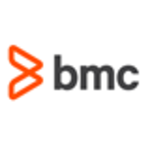What is our primary use case?
I work for a local government, which is a pretty big organization as there are a lot of cities within the county. We do the file transfers for the county. It started off with SFTP only and then we managed to integrate our internal file transfers and everything else. From there, it has grown a lot more. We had one site originally, and now we're up to seven FTP sites.
We mostly use the software to interact with the outside world. Anything that comes in or goes out of our organization goes through our servers. Internally, because we have a lot of different systems, including mainframe, AIX, et cetera, and some systems don't speak to each other. For example, the mainframe doesn't have SFTP capabilities to communicate with AIX. We are the system in the middle that is involved in those transactions. For example, the mainframe will push out a file to us and then we will use or create a Globalscape script to push out that file to whichever server or file share it needs to go to.
How has it helped my organization?
The solution helps us a lot. If we didn't have it, and instead had a plain FTP solution, that would require a lot of other people to do extra tasks, including programming, to get files from point A to point B in a certain way. It results in huge time savings for our organization because a lot of the work is done by Globalscape, making it seamless to everybody else. If we didn't have the software, it would definitely require a lot of programmers to do a lot of work to create programs to get things done. Having a programmer write a program takes a long time. With Globalscape, all of that is managed in the background.
It also automates the submission of regulatory documentation. We have dozens of jobs that send out information on a weekly and monthly basis. It definitely makes it easy to send that data out to the people who require it at a specific time. It's really a set-it-and-forget-it, which is great. You set up a timed event or an ad hoc event that depends on when a file is uploaded. We set up a schedule and that was it. We don't have to tinker with it unless there's a change in a remote server or a server path.
It has reduced our workload. Unfortunately, during the pandemic, the quantity of data transfers has increased enormously mostly because we had to shift from in-office, paper delivery to an almost 100 percent online presence. Initially, there was a lot of work creating accounts and setting up a lot of new processes, but thankfully the software allowed us to do that. And it has been robust enough to handle the amount of data that we have needed to transfer on a daily basis. It does save us a lot of time.
What is most valuable?
Globalscape has a lot of good features. It's pretty easy to manage, once you understand the product and how it works.
The ability to map users to a virtual folder is excellent because server storage space is expensive compared to NAS or other types of storage solutions. Being able to map a user's home folder to a network location that is not in the home folder is a major advantage. There is a lot of data that we are not able to store on our servers because our servers are only transitory. The files do get deleted, as part of our rules, because otherwise we would run out of space.
The other thing is that the Advanced Workflow Engine it comes with is brilliant because it allows us to create scripts and perform behind-the-scenes jobs that would otherwise require a third-party solution. For example, somebody wanted a list of the emails of users who work for our organization. Using that tool, we were able to grab the information from Active Directory, process it, create a ZIP file, and then push it out to the person who needed it. That type of function generally does not exist in a plain FTP solution. You would have to create a special code on the outside to get all that other stuff done in the background. With Globalscape, we can get all of that done in one package.
In addition, the reporting is excellent. They keep on augmenting the software with more features for security and compliance when it comes to integration with third-party products, of course, but it also has the ability to scan files for viruses as they come in and go out, which is a great feature.
Globalscape also secures sensitive data inside our network so that only verified users have access. Whenever somebody asks for an account, we always find out what the data is for. Based on that, it's either stored locally on our servers or in a secure network location that is behind firewalls. Unless you have access, there's no way you can get access to those files. Because we are a local government, we also have to deal with police files and Corrections Department data. And of course, a lot of employee data goes through our servers, including Social Security numbers. That's very sensitive information and we make sure that data is delivered securely or kept in a secure location. Having the data secured inside our network is definitely important to us. That is why we host it internally. Although we're migrating stuff to the cloud, having this set up locally allows us to maintain security compliance.
Our security office is satisfied with the work that we do and the capabilities that we have for ensuring that all the data that gets transferred to us is clean. We cannot afford to have a virus come in and hit us randomly over the network.
Another nice feature is the centralized platform for the management of file transfer operations. It's very simple to use and everything is in one place. As long as you know what you're doing, it's pretty straightforward. Creating user accounts, virtual folders, and jobs are all very straightforward.
What needs improvement?
There is only one thing that they need to figure out, as of my last conversation with their engineers. There are two ways to install Globalscape: as a standalone server or as a high-availability server, either Active-Active or Active-Standby. We are currently using standalone servers. That means if we want to upgrade the software, I shut down one of the two back-end servers, upgrade the software, make sure everything is correct, and then turn traffic back on to that one. I then proceed to upgrade the second server. With their high-availability solution, that is not a possibility. Both servers have to be shut down to perform the upgrade. We're a 24/7 shop. We don't have a window where we can have downtime. If we have to shut down both servers, that shuts down FTP, period, and we're down. We cannot be down, at all.
Our solution is to have two primary active nodes and two nodes in standby. Our upgrade path is going to be going from two standalone to two high-availability servers, with two additional servers on the back end just sitting there doing nothing, so when the time comes that we have to upgrade, we will be able to shut down the main high-availability cluster, perform the upgrade, and then switch back. That's a pain. And that's the only thing that could be improved, because once we set up the high-availability version, it's going to be a little more tedious to do a software upgrade.
As time goes on, it's very important to keep the software as up-to-date as possible because there are enhancements for security protocols that they've included. The lack of ability to upgrade would be a showstopper for us if we were running in the minimal high-availability mode.
Having high availability is also important because it's cheaper for licenses and it's easier to manage those servers, versus two standalone servers. But that makes our upgrade path the only downside.
For how long have I used the solution?
As an organization, we've been using Globalscape Managed File Transfer for longer than I've been managing it, and I've been managing it for over five years.
What do I think about the stability of the solution?
It's very stable. We rarely have any issues with the software. We've had minor bumps only when performing upgrades. And those weren't the fault of Globalscape. They were the result of poor programming on our end.
It's pretty self-sufficient and there isn't much we need to do to it, and that saves us a lot of time. We don't have to go in there every day and make sure everything is running or run reports to see if there are any jobs that have failed. That rarely happens.
What do I think about the scalability of the solution?
We could scale it a lot more than we have. It is easy to add more servers. If our load were to increase, it would be pretty simple to add an additional server to the environment and have it handle the additional traffic. Scaling it is probably one of the easiest things to do. You just spin up another server, install the software, and have everything synchronized and you're up and running.
We have just about all of the modules that Globalscape offers and have used all of their features to their full potential.
We don't have any bottlenecks currently. If that did become an issue, we could easily add an additional server and be done.
How are customer service and support?
Their technical support has been great. I've contacted them during business hours as well as after business hours when we have had a problem after-hours. They have been able to resolve the problems very quickly, for the most part.
Sometimes, there are problems that level-one support is not able to resolve and they will move it up quickly to the next level, without us having to wait for a long time. I can't complain about the support that they've provided to us.
There is a learning curve when it comes to using Globalscape Managed File Transfer, but when we have run into issues, their support team has been great in getting us the answers that we need. When we get a strange request that we are not sure how to do, they're able to fill in the gaps. They have all that knowledge and have worked with other companies that have had those issues before.
We had people logging in using a domain/username, but Globalscape doesn't require that. We had an issue with that and I contacted their support. They looked at the issue and they were able to provide a fix for it immediately.
How would you rate customer service and support?
How was the initial setup?
I wasn't here for the initial setup of the solution, but I was here when we went from one server on one box to having two load-balanced servers. I did all that migration, moving that SFTP server to the new environment and collapsing our internal FTP.
Moving the first server, the SFTP, was easy, because it was a matter of moving one backup configuration and restoring it on a new box. We did hire them for consulting on the setup to make sure that we were able to do high-availability.
Collapsing our internal FTP was interesting because that was running on Microsoft FTP. It was a "landfill." People dropped files and forgot that they were there and cleaning up that mess was a little bit of work, but that was just because of the way it was set up. I was able to manage the migration of all of that stuff over to the Globalscape infrastructure. Cleaning the data and making sure we kept the accounts we needed to keep was a task we had to do. Once we had it all set up, we were able to set up the site for our internal FTP, which is now both internal and external, and move everything over to the new server. It took a little while to clean up, but on the Globalscape side it was pretty straightforward.
As far as maintaining the solution goes, we currently have two people involved.
What's my experience with pricing, setup cost, and licensing?
Globalscape is not cheap, but you get what you pay for. The cost is worth the value of the product. What you're getting is a good, stable solution that does a lot. We don't run the basic version, we run the full enterprise version of the software that has all the bells and whistles. It has all the features that we need and the pricing is fair, given what offers. I think it's a pretty good deal.
We could go with something cheaper, but then we might not get all the updates that we need or all the additional stuff that they're constantly innovating into the product. That's a lot of value added. The analogy would be if Windows stayed with Windows NT, for instance. That would not be good. Windows keeps on moving, progressing, and making things better, and so does Globalscape. Globalscape looks at what customers need and, based on that, they keep on adding features and functions that are useful and that make our jobs a lot easier and provide a lot more automation.
Which other solutions did I evaluate?
I believe our organization did evaluate other options. I think they chose Globalscape because of the automated features it has available. A lot of the other solutions are just plain FTP servers. Back then, they didn't do a lot of automation. A lot of them are now trying to add those features because they see them as necessary for a lot of businesses. Back then, Globalscape was one of the very few companies that had that type of integration.
On my own, I've demoed a few of them and they're not as straightforward as Globalscape. Of course, I'm used to Globalscape, but they don't have a lot of the bells and whistles that Globalscape has.
What other advice do I have?
It's not that important that it's designed for Windows because we work with different systems. But it is nice that it is designed for Windows because it's easier to manage than using the command line or relying on different versions of Linux. Windows is a more standardized platform and we know it will operate in a certain fashion. With other OSs, it would be a lot more expensive or a lot more challenging. With Linux, there are so many variants out there that it's impossible to say they're all standard. It might work perfectly on one but not work on another one. Having Globalscape on Windows is great because it's used everywhere and easily manageable. It's a good pairing.
If it weren't for Globalscape's automations, it would be a lot more difficult to use. It has been a blessing to have those features available to us to make our jobs a lot easier.
Which deployment model are you using for this solution?
On-premises
Disclosure: PeerSpot contacted the reviewer to collect the review and to validate authenticity. The reviewer was referred by the vendor, but the review is not subject to editing or approval by the vendor.











